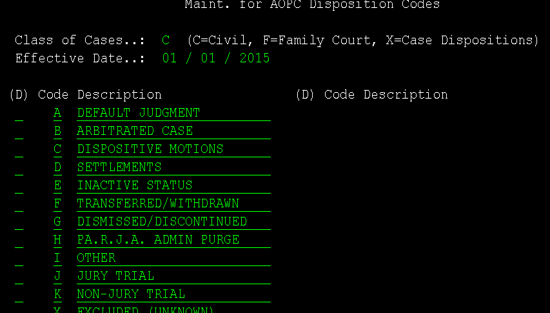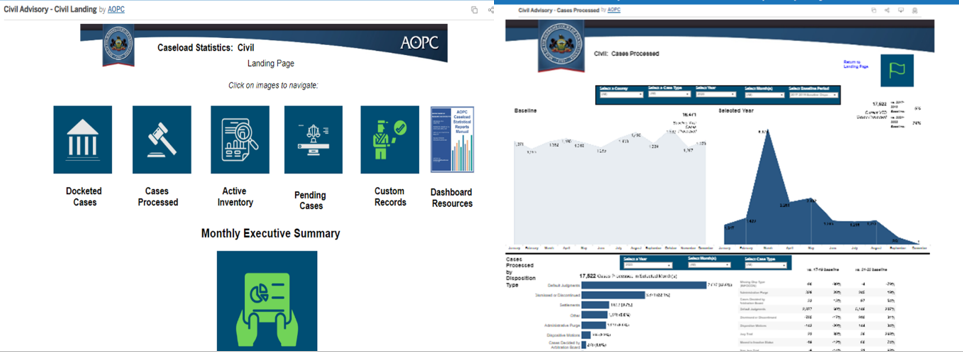The Administrative Office of Pennsylvania Courts (AOPC) is applying the technical and business definitions of the National Open Data Standards (NODS) to resolve enduring, and common, obstacles to collecting good civil and family court data. Developed by the Conference of State Court Administrators and the National Center for State Courts (NCSC), NODS is intended to facilitate sharing and integration of court data by specifying (1) logical business standards that define the variables to be included in court datasets; and (2) technical standards that will define the data structure, variable formats, and values.
Nationally, many states struggle to coordinate multiple system vendors in place of a statewide case management system. State trial courts retrieve court metrics from mismatched, local systems that are differently programmed, managed, and updated and, as a result, deliver different data results. For example, Pennsylvania’s statewide civil and family court data are compiled from data reported out of nineteen different local systems (see the sample screen below).

This is not uncommon. But communicating data standards to multiple vendors can quickly become a garbled exchange as variable local practices, state and national data specifications, and vendor protocols shape the availability, accuracy, and reliability of court data.
What if states could skip “middleman” conversations and directly apply NODS language to source data? Pennsylvania has partnered with one of its largest vendors to find out. The Administrative Office’s Research and IT staff negotiated access to the vendor system’s source data, built an extraction tool and began creating NODS data products with its own personnel and software resources. The source data feeds AOPC statistical reports and data dashboards that display a sharper picture of civil and family caseloads for local court personnel and state judicial leadership. Thru this pilot, Pennsylvania has found that:
- Translating source data into a NODS framework provides a uniform schematic applicable to multiple vendors;
- Direct access to the source data obviates any need to translate vendor programming language or other interpretive guesswork;
- At their source, data errors are fully visible for correction, and shared insights help the vendor improve its product;
- Vendors who participate have a competitive benefit to offer clients, specifically state-supported, no cost data products; and,
- Data access and updates are not dependent on vendor schedules and pricing.

Regardless of any system view, the NODS output (pictured above) is a uniform data portal for all judicial leadership, policymakers, funders, and data users to retrieve information, monitor caseloads and make comparisons critical to efficient case and court management.


